
Concept explainers
(a)
Interpretation:
The structure and the stereochemistry of products formed by the reaction,
Concept introduction:
The addition of
Answer to Problem 7.55AP
The products formed by the reaction,
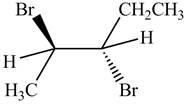
The stereo isomeric products that are formed are in the same amounts. Therefore, the racemic mixture is obtained.
Explanation of Solution
The reaction of

Figure 1
The products obtained are in equal ratio. Therefore, the racemic mixture is obtained.
The products formed by the reaction
(b)
Interpretation:
The structure and the stereochemistry of products formed by the reaction,
Concept introduction:
The addition of
Answer to Problem 7.55AP
The products formed by the reaction
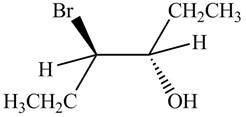
The stereo isomeric products that are formed are in the same amounts. Therefore, the racemic mixture is obtained.
Explanation of Solution
The reaction of

Figure 2
The products obtained are in equal ratio. Therefore, the racemic mixture is obtained.
The products formed by the reaction
(c)
Interpretation:
The structure and the stereochemistry of products formed by the reaction
Concept introduction:
The addition of
Answer to Problem 7.55AP
The products formed by the reaction
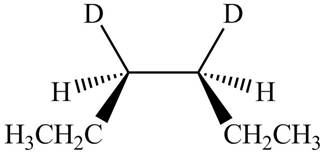
The stereoisomeric product that is obtained by the
Explanation of Solution
The reaction of

Figure 3
Therefore, the compound obtained is meso compound.
The products formed by the reaction
The stereo isomeric product that is obtained by the
(d)
Interpretation:
The structure and the stereochemistry of products formed by the reaction
Concept introduction:
The addition of
Answer to Problem 7.55AP
The product formed by the reaction,
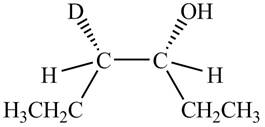
The stereo isomeric products that are formed are in the same amounts. Therefore, the racemic mixture is obtained.
Explanation of Solution
The reaction of
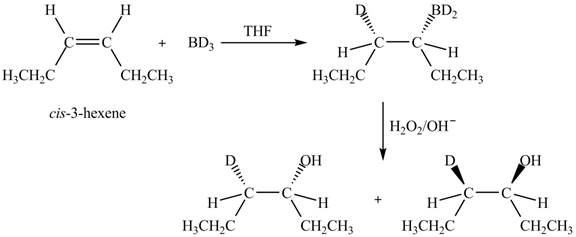
Figure 4
The products obtained are in equal ratio. Therefore, the racemic mixture is obtained.
The products formed by the reaction
The stereo isomeric products that are formed are in the same amounts.
Want to see more full solutions like this?
Chapter 7 Solutions
Organic Chemistry
- Write all of Me Possible Products For each Of the Following reactions. In each case identity all pains of enantiomers, all digsterzoners and all Meso compounds 9. 11-60 11-0-11 V-G Η Η H ~ C-11 +HB+ - 1 H b. पन्ना 171-0-11 H-C-H Н C-C=c-call +HBr Perendez ==arrow_forwardHow can i draw the mechanisms for this molecule?arrow_forwarda. Discuss and explain he difference IN Stability between the Chai and Boat Гольцу от судомехане b. For the Following Molecule draw both possible Clain conformations and explain which one is more stable and for what Reason. H. CH₂ CH₂ H "Harrow_forward
- Please provide the mechanism for this reacitonarrow_forwardQuestion 5: Name the following compound in two ways using side chain and using prefix amine (Common name and IUPAC name both) CH3NH2 CH3CH2NHCH3 CH₂CH₂N(CH3)2 Draw the structure of diethyl methyl amine Question 6. Write the balanced combustion reaction for: a. Hexane b. Propyne c. 2-pentene Question 7: Write the following electrophilic substitution reactions of benzene: Hint: Use notes if you get confused a. Halogenation reaction: b. Nitration reaction : c. Sulphonation reaction: d. Alkylation reaction: e. Aceylation reaction:arrow_forwardQuestion 4. Name the following structures ○ CH3-C-N-H H CH3CH2-C-N-H H CH3CH2-C-N-CH3 Harrow_forward

 Organic ChemistryChemistryISBN:9781305580350Author:William H. Brown, Brent L. Iverson, Eric Anslyn, Christopher S. FootePublisher:Cengage Learning
Organic ChemistryChemistryISBN:9781305580350Author:William H. Brown, Brent L. Iverson, Eric Anslyn, Christopher S. FootePublisher:Cengage Learning

